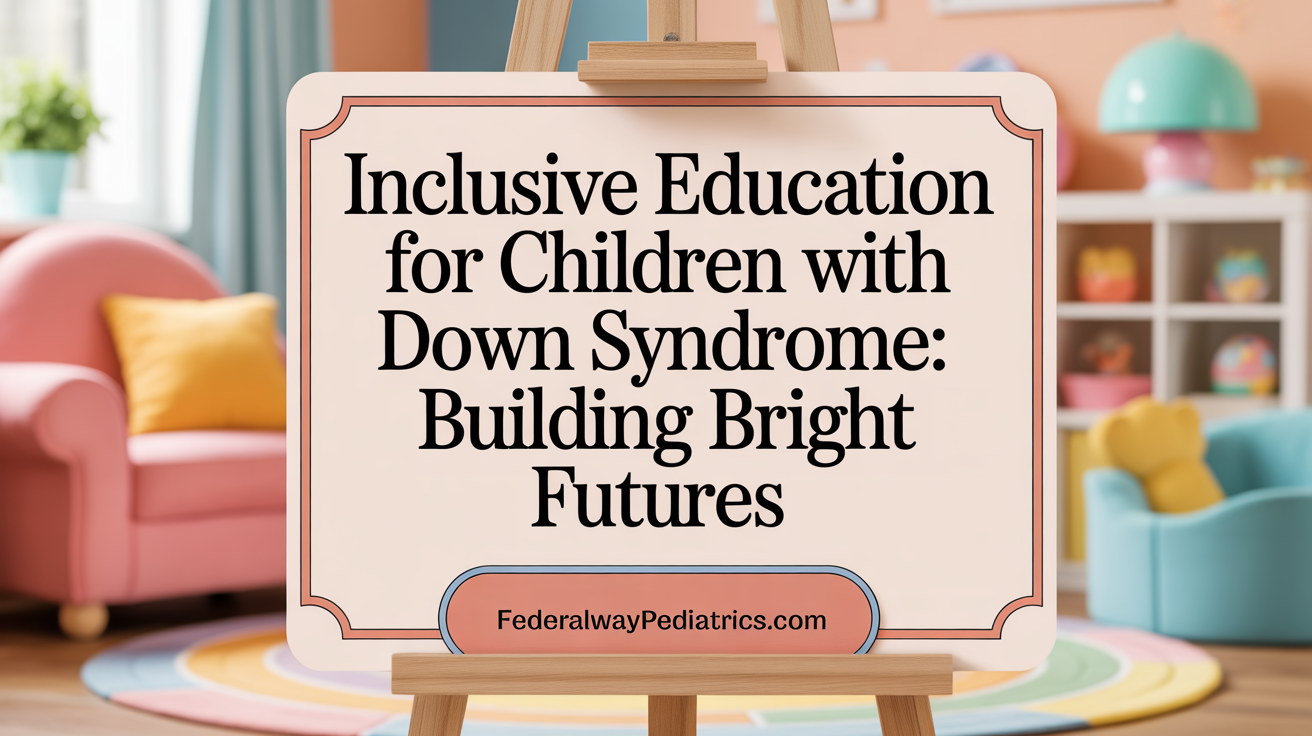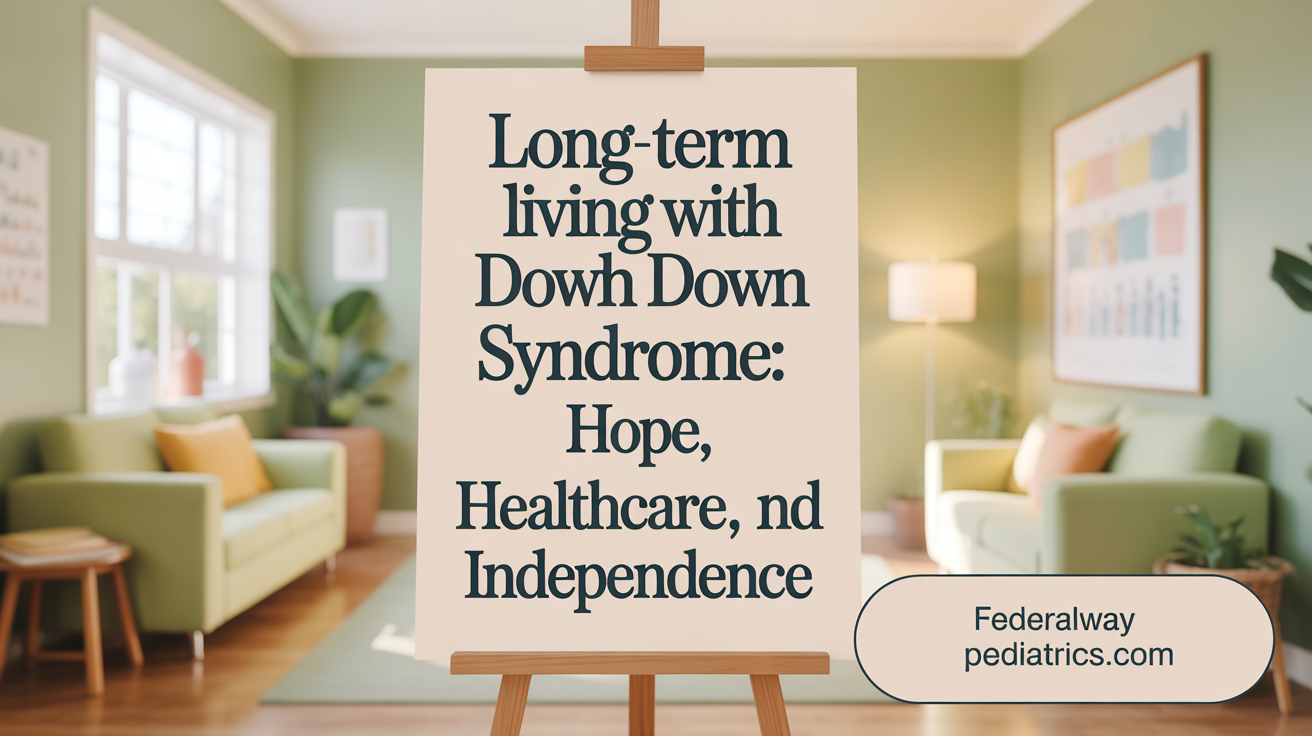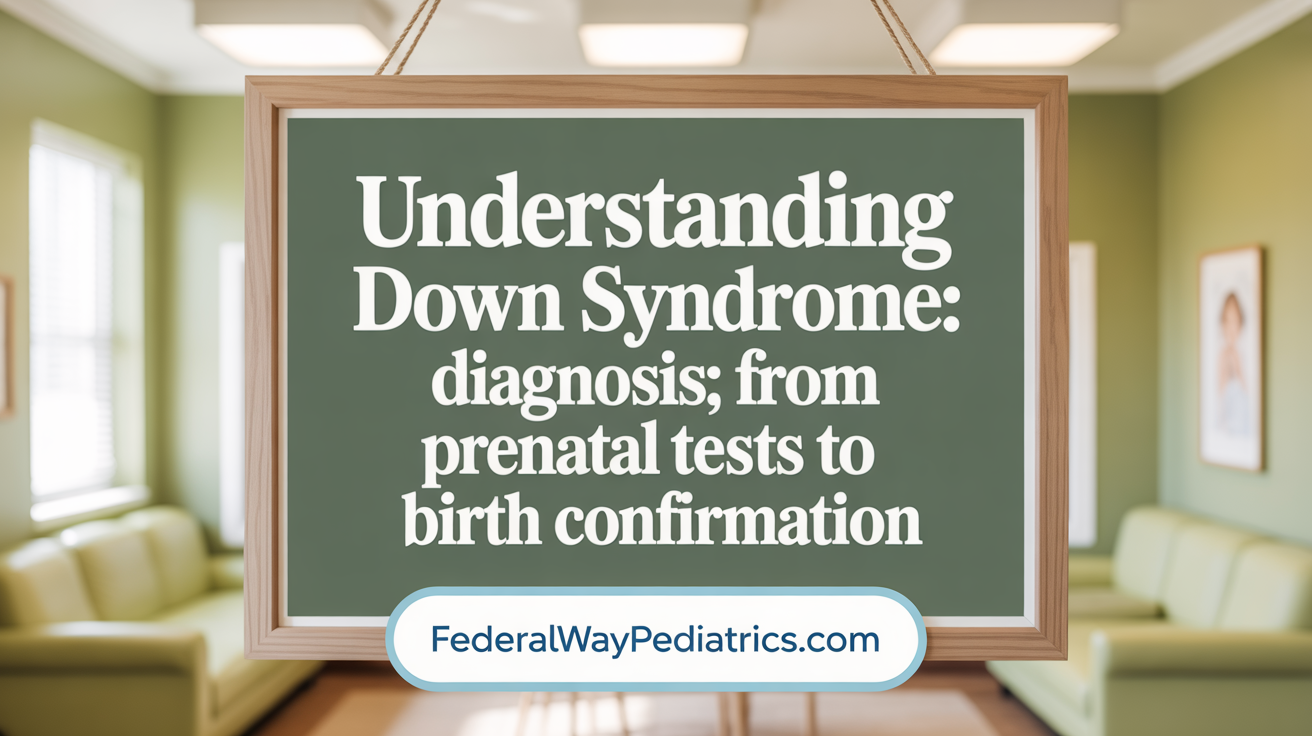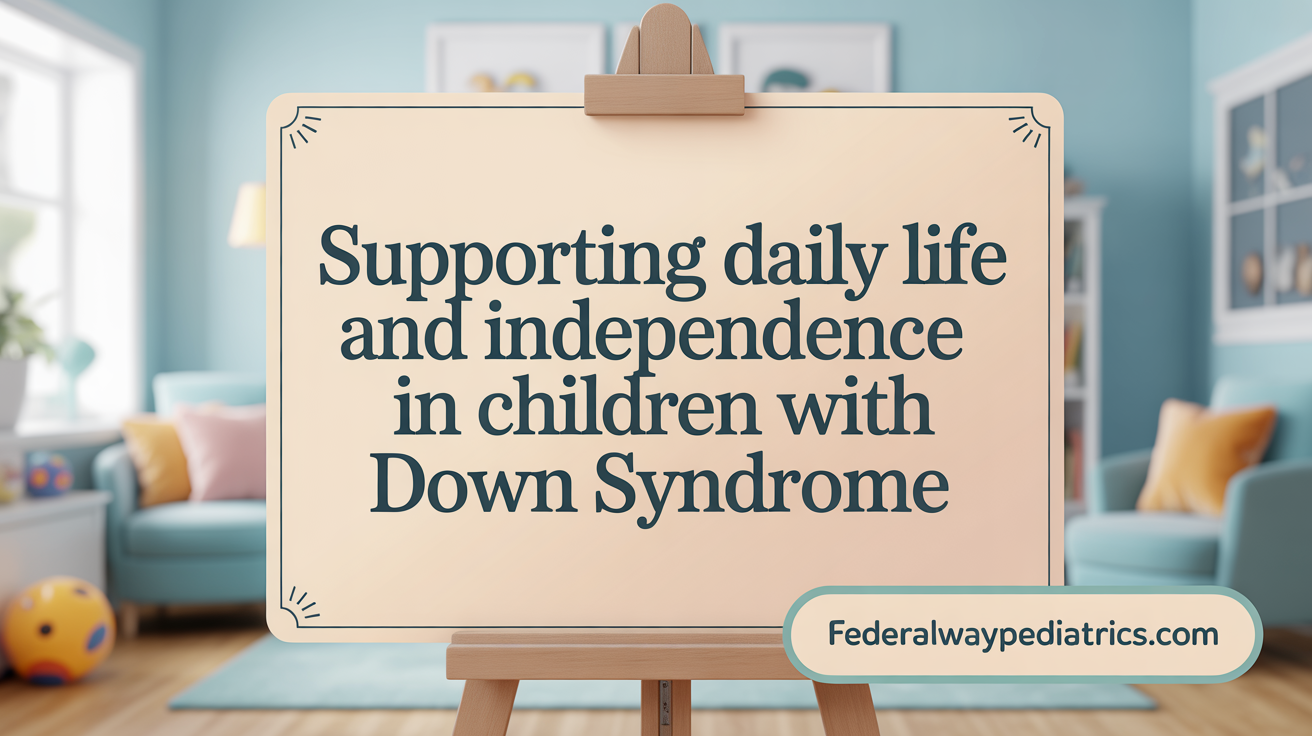Understanding Down Syndrome in Children
Down syndrome is a complex genetic condition characterized by the presence of an extra copy of chromosome 21. Affecting both physical growth and cognitive development, children with Down syndrome require specialized care and support to thrive. This article provides an in-depth look at the causes, early signs, health considerations, therapies, educational options, family support, and long-term outlook, offering guidance for caregivers and professionals dedicated to optimizing outcomes for these children.
Genetic Causes and Types of Down Syndrome
What causes Down syndrome?
Down syndrome is primarily caused by an abnormality in cell division that results in an individual having an extra copy of chromosome 21, leading to a total of 47 chromosomes instead of the usual 46. This genetic anomaly disrupts normal development and causes the characteristic physical traits and intellectual disabilities.
Trisomy 21
The most common form of Down syndrome, accounting for about 95% of cases, is called Trisomy 21. It occurs when there is a full extra copy of chromosome 21 in every cell. This extra chromosome results from nondisjunction during the formation of the egg or sperm, leading to an imbalance in the genetic material.
Nondisjunction
Nondisjunction is a failure of chromosomes to separate properly during cell division. When this happens during either meiosis I or meiosis II in the parental reproductive cells, both copies of chromosome 21 can end up in one gamete. Fertilization then results in an embryo with an extra chromosome 21, causing Down syndrome.
Translocation
In about 3-4% of cases, Down syndrome is caused by translocation. This occurs when a part of chromosome 21 attaches to another chromosome, usually chromosome 14 or 22. Unlike trisomy 21, translocation can be inherited if a parent carries a balanced translocation configuration where no genetic material is gained or lost. Such cases involve a rearrangement rather than an extra chromosome per se.
Mosaicism
Mosaicism accounts for approximately 1-2% of cases. It happens when nondisjunction occurs after fertilization during early cell division, leading to a mixture of cells—some with the normal 46 chromosomes and others with 47 due to an extra chromosome 21. The severity of symptoms can vary depending on the proportion of affected cells.
Inheritance patterns
Most cases of Down syndrome are random and not inherited. The likelihood increases with maternal age, especially for nondisjunction-related trisomy 21. However, translocation cases may be inherited if one parent carries a balanced translocation, which can be passed on, increasing the risk for future pregnancies.
Understanding these genetic mechanisms helps in genetic counseling, risk assessment, and possible detection strategies during pregnancy. Knowledge of the type of Down syndrome can also inform families about recurrence risks and inheritance patterns.
| Type of Down Syndrome | Causes | Inheritance | Notes |
|---|---|---|---|
| Trisomy 21 | Nondisjunction during gamete formation | No | Most common, occurs randomly, increases with maternal age |
| Translocation | Part of chromosome 21 attaches elsewhere | Yes | Can be inherited, balanced translocation in parents |
| Mosaicism | Post-fertilization nondisjunction | No | Variable symptoms depending on affected cell proportion |
This understanding underscores the importance of genetic testing and counseling for families affected by Down syndrome.
Recognizing Early Signs in Newborns

What are the early signs of Down syndrome in newborns?
Infants with Down syndrome often display certain physical features right from birth. These include a flat facial profile, especially the nasal bridge, and upward-slanting eyes that give a distinctive appearance. The mouth may appear small, with a large tongue that tends to protrude, and the neck might be shorter than average.
Other common signs involve the skin folds that often cover the inner corners of the eyes, known as epicanthal folds, and a single crease across the palm of the hand, called a transverse palmar crease. The ears tend to be small, and the hands and feet are often shorter and may exhibit a sandal gap — a wide space between the first and second toes.
Low or poor muscle tone, medically referred to as hypotonia, is also typical and makes infants feel floppy or feel like they have decreased resistance when touched. This hypotonia can affect feeding, movement, and overall strength. Some newborns may have puffiness or edema, particularly around the hands and feet. Features such as Brushfield's spots—small white or grayish spots on the iris—and a deep crease on the palm are additional indicators.
While these physical signs are often noticeable at birth, they tend to become more evident as the child grows. Recognizing these features early helps health professionals specify the need for genetic testing, such as a karyotype, to confirm the diagnosis.
Early detection is crucial because it allows timely initiation of therapies like physiotherapy, speech, and occupational therapy to support motor, speech, and learning development. Addressing health issues such as heart defects or vision and hearing problems early on significantly improves outcomes.
Since symptoms and physical features can vary, not all signs are present in every child. Therefore, a combination of physical assessment and genetic testing is the definitive way to diagnose Down syndrome in newborns.
For more information on early physical signs and diagnosis of Down syndrome in infants, consulting healthcare providers and reputable health organizations is recommended.
Health Challenges and Medical Care for Children with Down Syndrome
Do babies with Down syndrome need special care?
Yes, babies with Down syndrome typically need special care because of the various health and developmental needs related to the condition. They often require close medical monitoring and treatment for common health issues such as congenital heart defects, hearing and vision problems, thyroid disorders, and gastrointestinal anomalies. Supportive therapies like physical, speech, and occupational therapy are vital to support motor skills, communication, and daily activities.
Early intervention programs start shortly after birth and continue through early childhood, helping children achieve developmental milestones and improve their quality of life. Regular health checkups with pediatricians, along with screenings by specialists, are essential. These include assessments by cardiologists, audiologists, ophthalmologists, endocrinologists, and other healthcare providers.
With consistent medical care, therapies, and family support, children and adults with Down syndrome can lead fulfilling, healthy lives, reaching their potential and enjoying active participation in society.
Supporting Growth and Development: Early Intervention and Therapies
What therapies and early interventions help children with Down syndrome?
Children with Down's syndrome benefit significantly from a range of therapies and early supportive programs that foster their developmental progress. Three main types of therapies are commonly utilized:
- Physical Therapy: Focuses on building gross motor skills, increasing muscle strength, and improving posture and balance. It supports achievements like sitting, crawling, standing, and walking.
- Occupational Therapy: Assists with developing everyday self-care skills such as dressing, feeding, and manipulating objects. It also helps adapt routines and environment for better independence.
- Speech and Language Therapy: Aims to enhance communication abilities, starting with pre-speech skills like sound imitation and progressing to language development.
Early intervention programs are crucial. They usually commence shortly after birth and continue until about age 3. These programs are highly personalized, involving specialists such as therapists, psychologists, and social workers. The goal is to support age-appropriate milestones, including head control, sitting, walking, and speaking.
Through techniques like sensory integration and adaptive strategies, these programs encourage children to explore and learn at their own pace. They also often involve training parents and caregivers to continue supportive activities at home.
Assistive devices are another important component. Using tools like special walkers, communication aids, and adapted educational materials can significantly boost learning and independence.
Children with Down's syndrome typically develop their skills at a delayed pace, but early and consistent therapy can help them reach their full potential. Tailored educational plans, such as an Individualized Education Plan (IEP), ensure that they receive the right support throughout their educational journey.
Investing in these early therapies and interventions creates a strong foundation, helping children improve their motor, cognitive, and communication skills, and leading to more positive outcomes as they grow.
Educational Support and Inclusion in School
 Children with Down's syndrome have access to various educational resources tailored to their individual needs. A common approach is the use of an Individualized Education Program (IEP), which is a personalized learning plan developed through collaboration among parents, teachers, therapists, and school staff. This plan identifies specific goals and provides necessary accommodations to support the child's academic and social development.
Children with Down's syndrome have access to various educational resources tailored to their individual needs. A common approach is the use of an Individualized Education Program (IEP), which is a personalized learning plan developed through collaboration among parents, teachers, therapists, and school staff. This plan identifies specific goals and provides necessary accommodations to support the child's academic and social development.
Education options generally include mainstream or inclusive classrooms, where children learn alongside their peers, and sometimes specialized settings if their needs require extra support. Inclusive education encourages participation in regular activities, with tailored adjustments to teaching methods and materials.
Effective teaching strategies for children with Down's syndrome often incorporate visual aids, multisensory learning experiences, and structured routines. Programs like See and Learn or RLI are evidence-based methods that focus on language, cognitive, and motor skills development. Teachers and support staff are trained to use simplified instructions, picture cues, and assistive technology, helping children engage and succeed.
Parent and teacher collaboration is vital. Regular communication ensures the child's progress is monitored, and the support plan adapts as they grow. Many organizations, including the National Down Syndrome Society (NDSS) and Down Syndrome Education (DSE), offer training programs and resources to help educators implement best practices and create inclusive classroom environments.
Assistive devices such as communication boards, adapted computers, and sensory tools are often used to facilitate learning and participation. Moreover, social-emotional programs help build confidence and peer relationships, fostering a supportive school experience.
Education support is designed not only to improve academic skills but also to promote independence, life skills, and social integration. The goal is to nurture each child's strengths, accommodate their challenges, and prepare them for lifelong learning and community involvement.
Family and Caregiver Resources and Support Services
What support services are available for families and caregivers of children with Down syndrome?
Families and caregivers of children with Down syndrome have access to a variety of services designed to support their needs and promote their child's development. Support groups, counseling services, and respite care are fundamental offerings that help families manage daily challenges and reduce stress.
Support groups—such as those organized by the National Down Syndrome Society (NDSS) and the Down Syndrome Community (DSC)—bring families together for shared experiences, peer advice, and emotional support. They often host local meetings, online forums, and social events, fostering a sense of community and belonging.
Counseling services offer emotional and psychological support, helping families adapt to their child's diagnosis, plan for future needs, and cope with ongoing medical or developmental issues.
Respite care provides temporary relief for caregivers from their daily routine, enabling them to rest and attend to their own health and well-being. Respite programs can be in-home or community-based and are often subsidized or covered by insurance.
Educational and advocacy resources assist families in navigating educational systems, securing necessary therapies, and understanding medical options. Organizations like the American Academy of Pediatrics (AAP) publish guidelines and informational materials to help families understand health monitoring and developmental milestones.
Local community programs also play a vital role by offering recreational activities, therapy sessions, and skills training tailored for children with Down syndrome. Programs such as GiGi’s Playhouse provide free, results-oriented support from birth through adulthood, including early intervention, job training, and social activities.
Additionally, parent mentorship programs pair experienced parents with new families, fostering shared knowledge and encouragement. Volunteer opportunities further connect families to their community and allow for meaningful engagement.
Overall, these support services are designed to empower families, enhance the quality of life, and ensure children with Down syndrome reach their full potential.
Long-Term Outlook: Life Expectancy and Quality of Life

What is the long-term outlook for children with Down syndrome?
The future for individuals with Down syndrome has greatly improved over the past few decades. Thanks to medical advances, early diagnosis, and better management of associated health conditions, many people with Down syndrome now live well into their 60s and beyond.
Modern medical care includes surgeries for congenital heart defects, regular health screenings, and treatments for common issues such as thyroid disorders and vision or hearing problems. These interventions help prevent or control complications, allowing for increased longevity.
Most children with Down syndrome now survive past childhood and into adulthood. The five-year survival rate for those with heart defects, a common health concern, exceeds 93%, demonstrating the significant progress in medical treatment.
Additionally, early intervention programs and improved educational resources support cognitive and social development, enabling many adults with Down syndrome to enjoy meaningful participation in community activities and employment.
Transitioning from childhood to adult care involves planning for ongoing medical support, job training, and independent living arrangements. Many individuals with Down syndrome are achieving higher education and employment, reflecting broader societal acceptance and inclusion.
Research continues to focus on increasing quality of life and lifespan. Advances in therapies, health management, and community integration are making it possible for many to lead active, fulfilling lives.
Although disparities still exist, particularly among different racial and socioeconomic groups, the overall outlook continues to brighten with the dedication of healthcare providers, researchers, families, and communities.
In conclusion, with continuous improvements in healthcare and supportive services, children with Down syndrome can expect to enjoy longer, healthier, and more independent lives, fully participating in society throughout their lifespan.
Diagnosis of Down Syndrome: Prenatal and Postnatal Approaches

Can Down syndrome be prevented?
Down syndrome cannot be prevented because it results from a random genetic event involving the inheritance of an extra chromosome 21. While it is not possible to prevent the occurrence of Down syndrome, certain risk factors such as advanced maternal age (over 35) can increase the likelihood of having a child with the condition. Prenatal screening and diagnostic tests, including non-invasive prenatal testing (NIPT), amniocentesis, and chorionic villus sampling (CVS), enable early detection but do not reduce the risk itself.
In some cases, for women with a high a priori risk or known translocation, options like pre-implantation genetic diagnosis (PGD) can significantly lower the chance of having an affected pregnancy. Overall, current medical and genetic advances focus on early detection and management of associated health problems rather than prevention of the condition itself.
Prenatal screening tests
Prenatal screening tests help estimate the chance that a fetus has Down syndrome. Common methods include blood tests that measure specific proteins and hormones, along with ultrasound assessments looking for markers such as nuchal translucency (fluid at the back of the fetal neck). These tests are non-invasive and pose no risk to the fetus.
Screening results are expressed as a risk ratio, indicating whether further testing might be necessary. If screening suggests a higher risk, diagnostic procedures are recommended for confirmation.
Diagnostic procedures
Diagnostic tests can confirm Down syndrome with nearly 100% accuracy. These involve analyzing fetal cells or tissue, obtained through invasive procedures.
- Chorionic Villus Sampling (CVS): Performed between 10 and 13 weeks of pregnancy, CVS involves sampling placental tissue to analyze chromosomes.
- Amniocentesis: Usually conducted between 15 and 20 weeks, this test involves extracting a small amount of amniotic fluid containing fetal cells for chromosomal analysis.
Both procedures carry a small risk of pregnancy loss but provide definitive diagnosis.
Postnatal diagnosis
A diagnosis after birth is generally made based on physical features, such as low muscle tone, characteristic facial features, and other signs. Confirmation is achieved through genetic testing.
- Karyotype testing: This is the primary method, where a blood sample is examined under a microscope after staining to identify the number and structure of chromosomes.
- The test reveals the presence of an extra chromosome 21, confirming Down syndrome.
Genetic counseling
Genetic counseling is crucial for expecting parents, especially if prenatal tests indicate a higher risk or if there is a family history. Counselors provide information about the condition, discuss options, and help families understand the implications and available support or intervention strategies.
| Approach | Description | When Used | Risk Involved |
|---|---|---|---|
| Prenatal Screening | Non-invasive tests to estimate risk | During pregnancy (first and second trimester) | No |
| Diagnostic Testing | Invasive tests confirming diagnosis | After positive screening or high risk | Slight risk of pregnancy loss |
| Postnatal Diagnosis | Physical exam and genetic testing after birth | Immediately after birth | None |
| Genetic Counseling | Professional guidance on the condition and choices | Before and after testing | None |
Understanding the various diagnosis options helps families make informed decisions and prepare for the specific needs of a child with Down syndrome.
Daily Life Support and Promoting Independence in Children with Down Syndrome

Routines and Structure
Children with Down's syndrome benefit greatly from consistent routines and structured daily activities. Establishing a regular schedule helps provide a sense of security, making it easier for children to anticipate what comes next. Visual aids like charts and picture schedules can reinforce understanding and foster independence. Consistent routines in meal times, bedtime, and activities support their developmental progress.
Communication Methods
Effective communication is essential for building understanding and confidence. Using clear, calm speech and visual communication techniques such as Signalong, Makaton, or PECS can significantly improve a child's ability to express needs and desires. Simplifying language, using gestures, and incorporating pictures help children develop language skills and participate more actively in daily interactions.
Health and Physical Activity
Regular health checks and physical activity are crucial parts of a child's routine. Encouraging movement through playful activities not only promotes physical health but also boosts self-esteem and social skills. Activities like walking, swimming, or adapted sports tailored to the child's abilities can foster a healthy lifestyle and help manage common health issues such as hypotonia and obesity.
Behavioral Support
Children with Down's syndrome may sometimes exhibit behaviors like stubbornness or tantrums, often due to communication frustrations or sensory overload. Positive reinforcement, praise for accomplishments, and a calm approach can help manage these behaviors. Creating a predictable environment and understanding triggers enables caregivers to support emotional regulation effectively.
Encouraging Autonomy
Promoting independence involves encouraging children to make choices and participate in activities appropriate for their age. Using visual aids, establishing routines, and offering opportunities to manage personal tasks such as dressing or brushing teeth empower children to develop self-care skills. Allowing safe risks helps build confidence and prepares them for increasing independence.
Caregiver Self-Care
Taking care of a child with Down's syndrome can be demanding. Caregivers should prioritize their own well-being by taking breaks, seeking support from family or support groups, and sharing responsibilities. Maintaining physical and emotional health enables caregivers to provide consistent support and creates a positive environment for the child's growth.
This holistic approach ensures children with Down's syndrome receive the support needed to thrive in daily life, fostering independence and resilience.
Providing Lifelong Care and Encouragement
Children with Down syndrome face unique challenges but also possess immense potential given the right care and support. Understanding the genetic basis, early signs, and medical needs allows for timely interventions that improve health outcomes. Comprehensive therapies promote skill development, while tailored educational programs nurture cognitive and social growth. Equally important are the resources, services, and support networks available to families and caregivers, which sustain holistic well-being. With advances in medicine and education, the long-term outlook continues to improve, enabling children with Down syndrome to live meaningful, engaged lives. Through dedication, empathy, and informed care, families and professionals together can foster independence, confidence, and joy in the lives of these remarkable children.
References
- How to help children and young people with Down's syndrome - NHS
- Down Syndrome: Symptoms & Causes - Cleveland Clinic
- Children with Down Syndrome: Health Care Information for Families
- Health Supervision for Children and Adolescents With Down ...
- Down Syndrome Program - Buffalo - Oishei Children's Hospital
- Down Syndrome Information and Support - Family Health - Utah.gov
- Caring for a Child With Down Syndrome - Mass General Brigham
- 7 Tips for Caring for a Child with Down Syndrome
